

CS 36 Traditional
First impressions The CS 36 was euphemistically named the Traditional to set it apart from the later Merlin 36. It had a low-slung, modern profile when first introduced. However, unlike other modern boats of the time that seem woefully outdated today, the 36 is still a handsome boat-a sure sign of sound original design work. The pinched reverse transom, an appendage left over from the IOR days, is easily recognized because it is almost always the same color as the wide cove stripe that flows into it, which was a distinctive and attractive styling touch. The sheer is fairly flat and the cabintrunk is low and sleek without a trace of wood. The fine entry has a moderate bow overhang that was a feature of many racer-cruisers in the 1970s and 1980s. Below the water, the CS 36 has a moderate forefoot that trails into a powerful fin keel. The standard draft is 6 feet, 3 inches, although an optional 4-foot, 11-inch shoal-draft model was popular with boats destined for the Chesapeake Bay. Aft of the keel there is a bit of bustle and the rudder is mounted on a partial skeg. With a displacement of 15,500 pounds, the CS 36 was moderate for its day, heavier than the Catalina 36 and quite similar, at least by the numbers, to the S2 11.0. The displacement/length ratio of 276 puts the boat in the cruiser category today and suggests that it should be able to stand up to a blow without the micromanagement that lighter, flatter boats require. A sloop rig, the single-spreader mast with an air draft of 52 feet, 10 inches, supports 640 square feet of sail area that translates into a sail area/displacement ratio of 16.5. Most 36s have a PHRF rating of about 120 to 125.
Construction The CS 36 has a solid fiberglass hull, unlike the later Merlin and many other similar boats of the day, including C&C boats, which for the most part had balsa or foam-cored hulls. Wall was adamant about this construction feature because he didn't like the idea of cored hulls. His views were shaped by the rugged conditions common in the English Channel and North Sea that tend to make designers more conservative. The deck, cabintrunk and cockpit sole are balsa cored. The hull-and-deck joint is on an inward flange and through-bolted on 4-inch centers. CS used a combination of efficient molded liners and more traditional bonding techniques. Bulkheads are tabbed to the hull and deck and further secured in place by molded liners and molded hull stringers. Molded pieces are used for a partial headliner, interior modules and cabin furniture bases. Overall the construction is very well done and older CSs have aged well. The lead keel is externally fastened and the fiberglass rudder is foam filled with a stainless steel stock.
What to look for The first thing to look for is a Traditional 36 as opposed to the Merlin, which was in production from 1987 to 1992 and is usually a bit more expensive. Although the two have similar profiles, the Traditional 36 displaces 2,000 more pounds and carries an additional 700 pounds of ballast. Also, early Traditional 36s had shorter spars imported from England. Unless you are planning some high-latitude sailing, look for a boat with the taller rig. According to several reports, CS was hard hit by the pox plague of the early- and mid-1980s. Most boats will have had one or more bottom jobs by now so it's important to try to find out the blister history of the boat you're considering. Other owner complaints are few and far between. Apparently water-logged rudders are a common problem, something that's anything but unique with foam filled rudders. Also, the CS 36 was originally fitted with gate valves and if these haven't been changed to seacocks they should be. The 1985 CS 36 that I inspected at the Miami Beach Marina has original Marelon ball valves that are functional and don't corrode, although they're vulnerable in a lightning strike. Carefully inspect all age-related items, especially the standing rigging. One last item to consider in selecting a used boat is location. Many boats seem to be located in Canada and on the Great Lakes, but there are also a good number available in the Caribbean. The freshwater boats, with their overall lack of corrosion, would clearly be my first choice, especially over a boat in from the islands that was used hard in the charter boat trade.
On deck The T-shaped cockpit, while not spacious, is well set up for both coastal and offshore sailing. The Edson pedestal and wheel is located well aft and the molded helmsman's seat increases visibility and makes long steering stretches more comfortable. T-shaped cockpits in general allow easy access to the wheel, although the cockpit seats are often not quite long enough to stretch out on. The single lever engine control is mounted in a user-friendly position on the port coaming, instead of down by your feet or through the wheel spokes on the pedestal. There is a stout bridgedeck, which is often overlooked on today's designs. Most sail controls are led aft. Lewmar 30s and 40s were the standard halyard winches, mounted on the aft end of the trunkhouse. Lewmar 43s were the standard primaries, which are mounted on the coaming just out of reach of the helmsman. Most CS 36s seem to have converted to midboom sheeting with the traveler mounted over the companionway. The original design had the traveler running across the bridgedeck. Original deck hardware was first-rate and CS offered features usually found on larger boats, including a stainless steel stemhead fitting with double anchor rollers, an external anchor locker and enclosed fair leads for the mooring lines. Rod rigging was an option, although most boats are fitted with 1-by-19 wire. The handrail on the cabintrunk is made of functional and low-maintenance stainless steel. The bow and stern double rail pulpits are top quality but the original aluminum stanchions are a bit light. The molded nonskid surface on the boat I inspected was well worn.
Down below The interior plan is fairly standard for an aft-cockpit 36-foot cruiser, however the teak joinerwork and overall workmanship is very nice. The forward cabin includes a V-berth double with a nice array of drawers and lockers underneath. The head is to starboard and includes a teak grate that covers the shower sump. The standard toilet was a high-quality Wilcox Crittendon. The saloon features an L-shaped settee to starboard that converts to a double berth, and with the straight settee opposite makes a good sea berth with the addition of a lee cloth. Two table arrangements were available-a fixed centerline table or bulkhead-mounted foldaway version. There is decent storage in lockers and shelves above and behind the settees, although the water tanks occupy the space beneath the settees. The galley is immediately to port when you drop below. The stainless steel countertops are impressive and most functional. There is a single sink, a three-burner stove and oven and a decent-size icebox/refrigerator. There are large fiddles for when working under way, a dedicated trash bin and outboard lockers for food stowage. The foul weather locker next to the companionway can also be accessed from the cockpit locker-a feature rarely found on a small boat. The nav station is opposite the galley and includes a good-size chart table with shelves above. The electrical panel is outboard and there are three drawers below. The head of the large quarter berth doubles as the nav station seat and some previous owners have added custom cushions to serve as seat backs.
Engine A couple of different engine models were available including a three-cylinder Volvo 28-horsepower and a 33-horsepower Mitsubishi. Most boats were fitted with a 30-horsepower Westerbeke coupled with a British Leyland block. Although the CS 36 is an easily driven hull, this is just enough engine for serious cruising and it will be hard pressed to push the boat into a choppy head sea. Access is primarily from behind the companionway and through a side panel in the quarter cabin. The aluminum fuel tank holds 35 gallons, translating into a realistic range under power of 250 to 300 miles.
Under way A friend of mine, Gary Ward, delivered a CS 36 from the East Coast to The Moorings charter base in Tortola several years ago. He remembers the boat to be well mannered in a blow and surprisingly dry down below even when blasting along to weather. The boat was fitted with a belt-driven, wheel-mounted autopilot and it steered the entire trip. Ward told me that the boat topped 7 knots frequently on a close reach, and that they completed the 1,200-mile passage from Charleston, South Carolina, in eight days, averaging 150 miles a day. Owners report that the main and No. 1 genoa can be carried up to about 20 knots. The helm doesn't load up easily and the boat is well balanced. The cockpit design lends itself to having a dedicated helmsman and a trimmer, but the boat is easy to handle and responds when sailed aggressively. The CS 36 is that rare combination, satisfying to race locally, capable of winning its class in the Bermuda or Mackinac races, and tough enough for serious bluewater cruising.
Conclusion Prices for used CS 36s range from around $40,000 for an early boat to around $70,000 for a later model. You can find other 15- to 20-year-old 36-foot production boats for less money, but few match the inspired design and quality construction of the CS 36. This boat belongs in the same quality category as Sabre and Tartan.
Also in Used Boat Notebook
- Hunter Passage 42
- Pearson Rhodes 41
- Santa Cruz 52
- Allied Princess 36
- Kelly-Peterson 46
Also from John Kretschmer
- Hove to in the gales of Biscay
- Sailing's Promise
- Passage to nowhere
- Farewell to brothers of the sea
- Plotting a course to Caribbean sabbatical cruise
- Passage Planning
- Ready to Rumble
- Good vibrations
- Launching and boarding a life raft
- The Great Circle Route: Connecting the dots of a sailing life
- Seaton 38 Trawler
- Pleasure Yachts
- Hard Dodgers
- Stern Extensions
- Service and Repair
- Local Businesses
- DIY Sources
- Classifieds
- Cascade's History
- Individual Boat Histories
- Contact Us & Our Location
Cascade CS 36
Cs 36 merlin
The cs 36 merlin is a 36.0ft masthead sloop designed by tony castro and built in fiberglass by cs yachts (canadian sailcraft) between 1986 and 1990., 100 units have been built..
The Cs 36 merlin is a moderate weight sailboat which is a reasonably good performer. It is very stable / stiff and has a good righting capability if capsized. It is best suited as a coastal cruiser. The fuel capacity is originally small. There is a short water supply range.
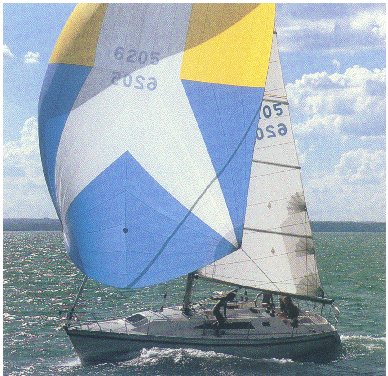
Cs 36 merlin for sale elsewhere on the web:

Main features
Login or register to personnalize this screen.
You will be able to pin external links of your choice.

See how Sailboatlab works in video

We help you build your own hydraulic steering system - Lecomble & Schmitt
Accommodations
Builder data, other photos.
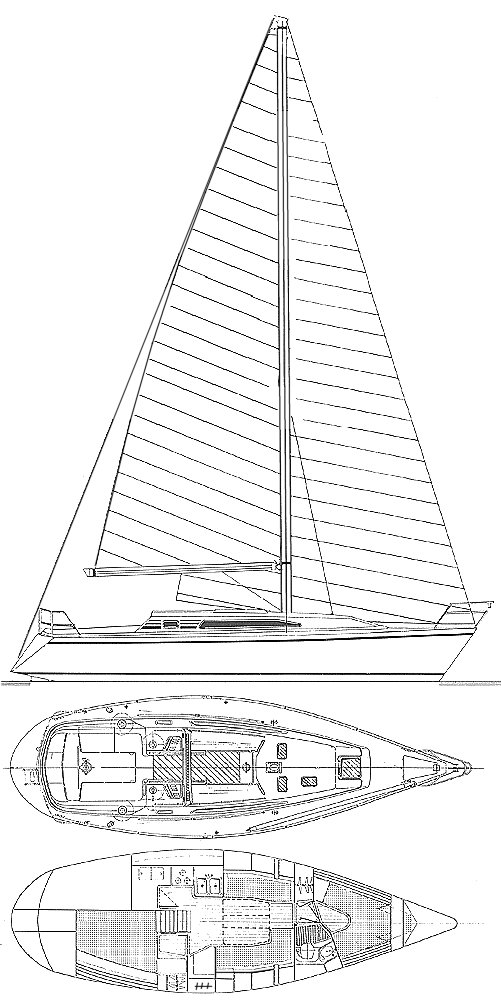
Modal Title
The content of your modal.
Personalize your sailboat data sheet
Great choice! Your favorites are temporarily saved for this session. Sign in to save them permanently, access them on any device, and receive relevant alerts.
- Sailboat Guide
CS 36 Merlin
CS 36 Merlin is a 35 ′ 11 ″ / 11 m monohull sailboat designed by Tony Castro and built by CS Yachts (Canadian Sailcraft) between 1986 and 1990.

Rig and Sails
Auxilary power, accomodations, calculations.
The theoretical maximum speed that a displacement hull can move efficiently through the water is determined by it's waterline length and displacement. It may be unable to reach this speed if the boat is underpowered or heavily loaded, though it may exceed this speed given enough power. Read more.
Classic hull speed formula:
Hull Speed = 1.34 x √LWL
Max Speed/Length ratio = 8.26 ÷ Displacement/Length ratio .311 Hull Speed = Max Speed/Length ratio x √LWL
Sail Area / Displacement Ratio
A measure of the power of the sails relative to the weight of the boat. The higher the number, the higher the performance, but the harder the boat will be to handle. This ratio is a "non-dimensional" value that facilitates comparisons between boats of different types and sizes. Read more.
SA/D = SA ÷ (D ÷ 64) 2/3
- SA : Sail area in square feet, derived by adding the mainsail area to 100% of the foretriangle area (the lateral area above the deck between the mast and the forestay).
- D : Displacement in pounds.
Ballast / Displacement Ratio
A measure of the stability of a boat's hull that suggests how well a monohull will stand up to its sails. The ballast displacement ratio indicates how much of the weight of a boat is placed for maximum stability against capsizing and is an indicator of stiffness and resistance to capsize.
Ballast / Displacement * 100
Displacement / Length Ratio
A measure of the weight of the boat relative to it's length at the waterline. The higher a boat’s D/L ratio, the more easily it will carry a load and the more comfortable its motion will be. The lower a boat's ratio is, the less power it takes to drive the boat to its nominal hull speed or beyond. Read more.
D/L = (D ÷ 2240) ÷ (0.01 x LWL)³
- D: Displacement of the boat in pounds.
- LWL: Waterline length in feet
Comfort Ratio
This ratio assess how quickly and abruptly a boat’s hull reacts to waves in a significant seaway, these being the elements of a boat’s motion most likely to cause seasickness. Read more.
Comfort ratio = D ÷ (.65 x (.7 LWL + .3 LOA) x Beam 1.33 )
- D: Displacement of the boat in pounds
- LOA: Length overall in feet
- Beam: Width of boat at the widest point in feet
Capsize Screening Formula
This formula attempts to indicate whether a given boat might be too wide and light to readily right itself after being overturned in extreme conditions. Read more.
CSV = Beam ÷ ³√(D / 64)
The CS 36 MERLIN, while having similar dimensions to the CS 36 TRADITIONAL, is a completely different design. While it was being produced a purchaser had five pages of options to choose from— a Kevlar or fibreglass hull; a swim platform or regular transom; a 28 hp diesel or a 43 hp turbo; a tall or regular rig and by the end, four keel configurations (shoal, wing, deep and performance bulb). As a result, other than the 20 or so that went into charter, no two Merlins are alike. Contruction standards were high. The hull was hand-laid fibreglass or Kevlar with balsa core above the water and both hull and deck were vacuum bagged. Wing keel version draft: 5.00’ / 1.52m
Embed this page on your own website by copying and pasting this code.
- About Sailboat Guide
©2024 Sea Time Tech, LLC
This site is protected by reCAPTCHA and the Google Privacy Policy and Terms of Service apply.

- Forum Listing
- Marketplace
- Advanced Search
- About The Boat
- Boat Builders Row
- SailNet is a forum community dedicated to Sailing enthusiasts. Come join the discussion about sailing, modifications, classifieds, troubleshooting, repairs, reviews, maintenance, and more!
Repowering a CS 36T
- Add to quote
The notarious westerbeke 33 in my CS 36 finally lived up to its reputation; cracked piston. On pulling the head found the cylinder walls were pitted, looks like water intrusion somewhere in the boats past. Mechanic says tolerance in walls too tiny to permit rebuild (rebore) so a new engine is in the works. Looking at a Westerbeke 44. It will fit the Hurth trans via an adapter plate. Has anyone done this already? Would you still go with the 44 or would you go Yanmar or some other engine? Any suggestions or advice would be appreciated. I am not mechanically inclinded but I want to know what is going on. Aquavit CS 36-T
Hi kerriour, I don't have any advice to give but I'm looking into buying a CS36T and, if you don't mind, I would be very keenly interested in how much this repowering winds up costing you, what's involved, etc. Some of the engines I've been seeing seemed dodgy, I'm almost taking for granted that I'll be repowering too. In fact, given how cramped the engine compartment is it baffles me how this engine can even be removed. zAr
Re: The 44B Hi Maine Sail, I'm looking at repowering a CS36 with a westerbeke w46. It's slightly longer than the 44B (~1.5 inches longer), but otherwise very similar overall. Do you think this would work in the CS36? Could you let me know what kinds of modifications were required? Thanks! -Josh
jmcelwee said: Hi Maine Sail, I'm looking at repowering a CS36 with a westerbeke w46. It's slightly longer than the 44B (~1.5 inches longer), but otherwise very similar overall. Do you think this would work in the CS36? Could you let me know what kinds of modifications were required? Thanks! -Josh Click to expand...
Well, the only reason I'm looking at the W-46 is because there's a really nice rebuilt one for sale cheap that's available (~$1500). I've also been told that the original w-30 is a bit underpowered for the boat (at least for rough weather), so wanted to upgrade the horsepower a bit (although the 46 is almost certainly more than would be needed). Basically, I'm just looking to see if the w-46 would work, as the opportunity to get one cheap seems to exist...
- ?
- 173.7K members
Top Contributors this Month
- New Sailboats
- Sailboats 21-30ft
- Sailboats 31-35ft
Sailboats 36-40ft
- Sailboats Over 40ft
- Sailboats Under 21feet
- used_sailboats
- Apps and Computer Programs
- Communications
- Fishfinders
- Handheld Electronics
- Plotters MFDS Rradar
- Wind, Speed & Depth Instruments
- Anchoring Mooring
- Running Rigging
- Sails Canvas
- Standing Rigging
- Diesel Engines
- Off Grid Energy
- Cleaning Waxing
- DIY Projects
- Repair, Tools & Materials
- Spare Parts
- Tools & Gadgets
- Cabin Comfort
- Ventilation
- Footwear Apparel
- Foul Weather Gear
- Mailport & PS Advisor
- Inside Practical Sailor Blog
- Activate My Web Access
- Reset Password
- Pay My Bill
- Customer Service

- Free Newsletter
- Give a Gift

How to Sell Your Boat

Cal 2-46: A Venerable Lapworth Design Brought Up to Date

Rhumb Lines: Show Highlights from Annapolis

Open Transom Pros and Cons

Leaping Into Lithium

The Importance of Sea State in Weather Planning

Do-it-yourself Electrical System Survey and Inspection

Install a Standalone Sounder Without Drilling

Rethinking MOB Prevention


Top-notch Wind Indicators

The Everlasting Multihull Trampoline

In Search of the Snag-free Clew

What’s Involved in Setting Up a Lithium Battery System?

Reducing Engine Room Noise

Breaking Point: What Can Go Wrong With Your Yanmar?

Mildew-resistant Caulks for Boats

Can We Trust Plastic Boat Parts?

Repairing Molded Plastics

Mailport: Marine plywood, fuel additives, through bolt options, winch handle holders

The Day Sailor’s First-Aid Kit

Choosing and Securing Seat Cushions

Cockpit Drains on Race Boats

Rhumb Lines: Livin’ the Wharf Rat Life

Resurrecting Slippery Boat Shoes

Shoe Goo’s Gift to Sailors

Tricks and Tips to Forming Do-it-yourself Rigging Terminals

Marine Toilet Maintenance Tips

Learning to Live with Plastic Boat Bits

The Ultimate Guide to Caring for Clear Plastic
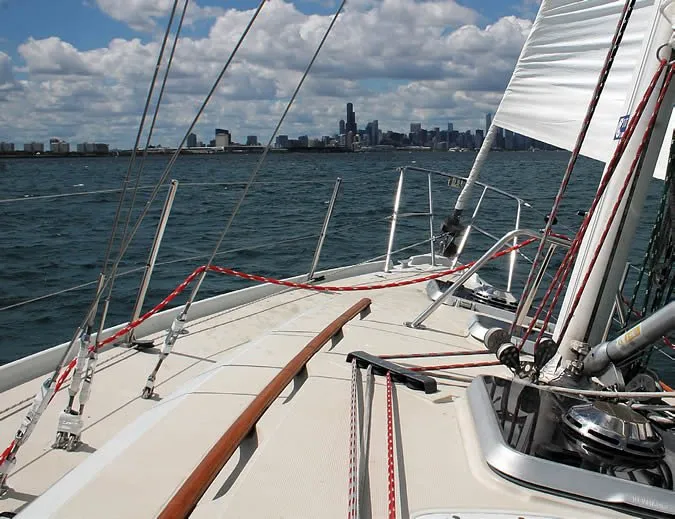
Deck Leaks, Mast Step Are Top Concerns

Allied Princess 36
Island trader 37/38, bristol channel cutter, morris 40, alerion sloop.
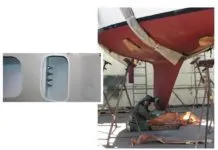
Age Calls for Close Inspection
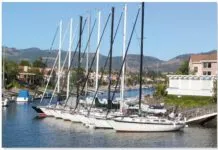
The Modern Classic Racer-Cruiser

Beneteau 393
Beneteau first 36.7.
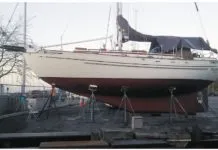
Heavy Glass Hull Marks Tayana 37 Boat

Bob Perrys Salty Tayana 37-Footer Boat Review
Hans christian 34/36, beneteau oceanis 36 cc.
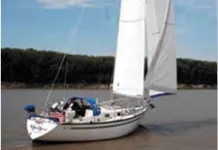
Timeless Tartan 37
Latest videos.
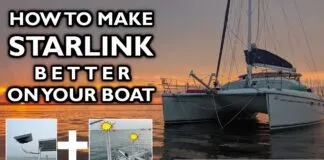
How To Make Starlink Better On Your Boat | Interview

Catalina 380: What You Should Know | Boat Review
- Privacy Policy
- Do Not Sell My Personal Information
- Online Account Activation
- Privacy Manager

COMMENTS
The 36 became known as the CS 36 Traditional when the CS Merlin was introduced in 1987. Production of the two 36 footers, overlapped for nearly a year. Diesel engines varied from the original Westerbeke 30-hp, to a 33-hp Mitsubishi and later, a 28-hp Volvo. SHOAL DRAFT VERSION: Draft: 4.92'/ 1.50m Displacement: 15650 lbs./7099 kgs.
CS 36 From the recently resurrected Canadian Sailcraft company, this early 80's racer/cruiser is well built, with a fair turn of speed. Its few shortcomings include a shallow bilge, difficult engine access and marginal stowage. By Darrell Nicholson - Published: February 24, 2016 Updated: April 7, 2020 1
CS 36 boats for sale Create Search Alert Clear Filter Make / Model: CS - 36 Location By Country from your location Condition New Used Length m Interest Rate (APR) Apply Now 7 Cs 36 Sort By : Recommended sort-by Recommended sort-by Listing Date: New to Old sort-by Listing Date: Old to New sort-by Year: Newest first sort-by Year: Oldest first sort-by
The CS 36 is a high-quality, versatile boat with a proud pedigree. Designed by Raymond Wall, who was for many years the chief designer and engineer for the venerable English firm of Camper & Nicholson, the 36 was introduced at the 1978 Toronto Boat Show.
The CS 36 hull is a solid fiberglass lay-up, although the decks, cockpit, and cabin are balsa-cored for light weight and stiffness. There is always the potential for deck deterioration, particularly around fittings and chain plate penetrations, and these areas should be checked carefully.
CS 36 is a 11.1 m monohull sailboat designed by Raymond Wall and built by CS Yachts (Canadian Sailcraft) between 1978 and 1987. Designer Raymond Wall Builder CS Yachts (Canadian Sailcraft) Associations ? # Built 400 Hull Monohull Keel Fin Rudder Partial Skeg Construction FG w/balsa cored deck Dimensions Length Overall 11.1 m Waterline Length 8.9 m
The CS 36 is a Canadian sailboat, that was designed by Raymond Wall as a cruiser and first built in 1978. [1] [2] [3] Production The design was built by CS Yachts in Canada who completed 400 boats between 1978 and 1987. The boat was a commercial success and 60 were sold in the first month it was produced. [1] [4]
The Cs 36 is a 36.5ft masthead sloop designed by Raymond Wall and built in fiberglass by CS Yachts (Canadian Sailcraft) between 1978 and 1987. 400 units have been built. The Cs 36 is a moderate weight sailboat which is a reasonably good performer. It is very stable / stiff and has a good righting capability if capsized.
If you are looking for a reliable and versatile sailboat, you might want to check out the Cascade CS 36 model. This boat is designed to handle any weather condition and offers spacious and comfortable accommodations. Learn more about the features and specifications of the Cascade CS 36 at Cascade Yachts, the official builder of Cascade sailboats and trawlers.
The Cs 36 merlin is a 36.0ft masthead sloop designed by Tony Castro and built in fiberglass by CS Yachts (Canadian Sailcraft) between 1986 and 1990. 100 units have been built. The Cs 36 merlin is a moderate weight sailboat which is a reasonably good performer. It is very stable / stiff and has a good righting capability if capsized.
12'. 6.25'. Outside United States. $65,000. Description: CS 36 Traditional (1984) Sl'n Abhaile (Gaelic for Safe Home) A beautiful, always fresh-water, Lake Ontario boat, never (formally) raced, superbly maintained and equipped. This boat has been outfitted from stem to stern for comfortable, and easy single-handed cruising.
New Arrival 1988 CS 36 Merlin US$49,750 La Paz Cruisers Supply & Brokerage | Puerto Escondido, Sea of Cortez, Mexico
CS 36 From the recently resurrected Canadian Sailcraft company, this early 80's racer/cruiser is well built, with a fair turn of speed. Its few shortcomings include a shallow bilge, difficult engine access and marginal stowage. By Darrell Nicholson - Published: October 23, 2000 Updated: November 7, 2019 0
Specifications: L.O.A.: 36' 6" (11.13 m) L.W.L.: 29' 3" (8.92 m) Beam: 11' 6" (3.51 m) Draft: 6' 3" (1.91 m) Displ: 15,500 lbs (7031 kg.) Ballast: 6500 lbs. (2948 kg.) Sail area: 822 sq. ft. (16.15 m²) Vertical clearance: 52' 10" (16.15 m) Motor: Westerbeke 30 hp diesel Headroom: standing Berths: 5 to 6 Rating (PHRF-LO) : 120
The hull of the CS 36 yacht is a one-piece fibreglass moulding. The hull is hand laid up with the finest materials available and reinforced at key points of stress. The CS 36 is made even stronger by a moulded spline and girder section down the centre of the yacht.
CS 36 Merlin is a 11 m monohull sailboat designed by Tony Castro and built by CS Yachts (Canadian Sailcraft) between 1986 and 1990. Designer Tony Castro Builder CS Yachts (Canadian Sailcraft) Associations ? # Built 100 Hull Monohull Keel Fin + Bulb Rudder Spade Construction FG Dimensions Length Overall 11 m Waterline Length 8.9 m Beam 3.5 m Draft
4 posts · Joined 2003. #1 · Jan 19, 2009. The notarious westerbeke 33 in my CS 36 finally lived up to its reputation; cracked piston. On pulling the head found the cylinder walls were pitted, looks like water intrusion somewhere in the boats past. Mechanic says tolerance in walls too tiny to permit rebuild (rebore) so a new engine is in the ...
US$43,043 Breezeway Yachts Inc | Toronto, Ontario
Sailboats 36-40ft. Deck Leaks, Mast Step Are Top Concerns. May 21, 2018. Allied Princess 36. Island Trader 37/38. CS 36. Bristol Channel Cutter, Morris 40, Alerion Sloop. Age Calls for Close Inspection. Sailboats 36-40ft January 18, 2016. The Islander 36 is a fairly light-displacement boat. The hand-laid hull is an uncored, single skin, with ...
CS CS boats for sale Create Search Alert Clear Filter Make / Model: All CS Location By Radius By Country from your location Condition All New Used Length to ft m Price to USD Year to Class Power Power-all-power All power Power-power-catamaran Power Catamaran Sail Sail-all-sail All sail Sail-cruiser Cruiser Sail-racer/cruiser Racer/Cruiser Sloop
Victoria, British Columbia, Canada. 1979. $36,723. Kendra is an exceptionally well cared for boat which is well equipped and ready to go. Her interior is in fantastic condition and her fresh water cooled engine has be well maintained with a new V-Drive recently installed. Notable Equipment and Information: Beautiful Teak Interior Forced Air ...
This boat builder presents a variety of hull types: displacement and monohull. ... 36 T, CS 33 and CS 36. Canadian Sailcraft models are available through yacht brokers, dealers, and brokerages on YachtWorld. The listings encompass a range of years, starting from 1980 models up to 1990. Canadian Sailcraft By Condition.